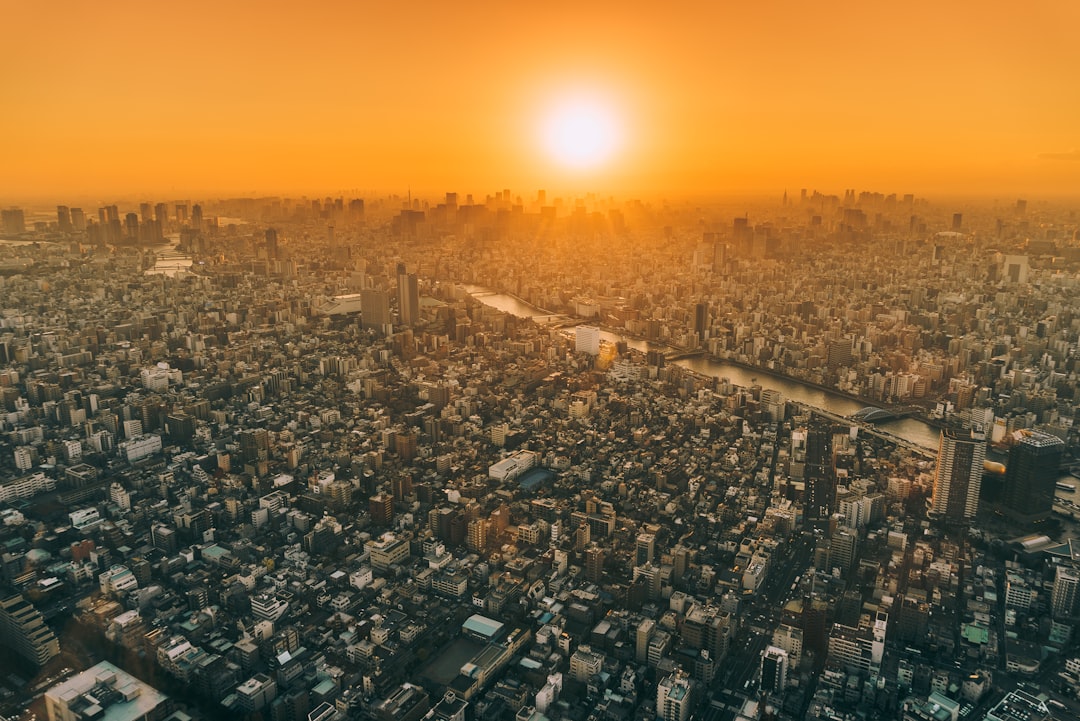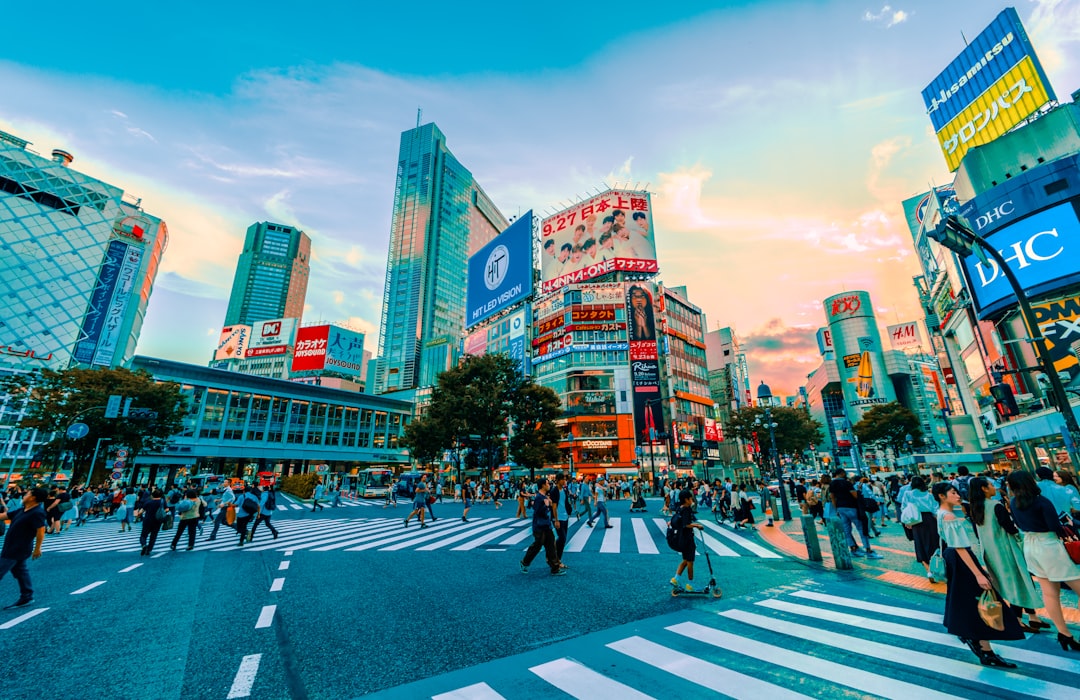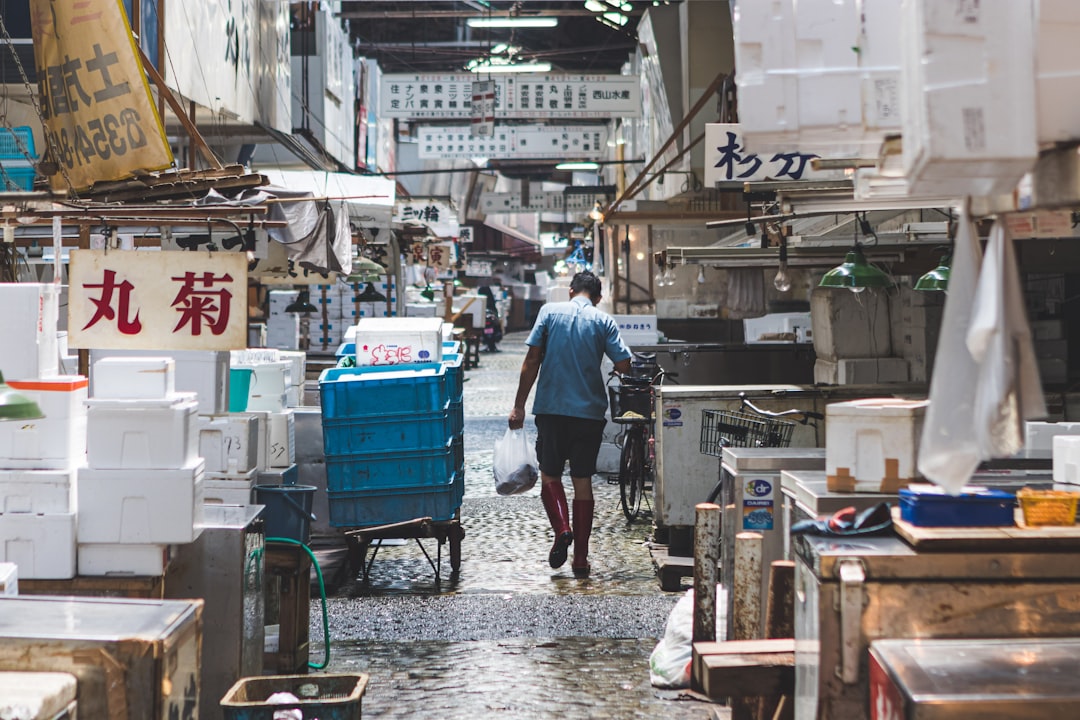Tokyo: An Ever-Evolving Metropolis Rich in History and Culture
Tokyo: An Ever-Evolving Metropolis Rich in History and Culture - Traditions Meet Modernity in Japan's Capital

At first glance, Tokyo appears like any other modern metropolis with its glittering skyscrapers and neon lights. But behind the ultra-modern facade lies a city steeped in centuries of tradition. This unique blend of old and new makes Tokyo an endless fascination for visitors.
Wandering the narrow lanes of Asakusa, you feel transported back to Edo era Japan. Locals dressed in kimono scurry to Sensoji, Tokyo's oldest Buddhist temple. The smell of incense fills the air as devotees offer prayers at the temple's altar. Nearby, small shops sell handicrafts like hand-painted fans and dolls. Just across the river, the Tokyo Skytree, one of the world's tallest structures, represents the city's futuristic side.
This contrast between tradition and modernity extends across Tokyo. In the shadows of the business district's tall office towers, salarymen in crisp suits pause to bow at small Shinto shrines. At Meiji Shrine, families pose for photos dressed in colorful kimono rented for the occasion. Temples hold meditation sessions with monks before opening hall doors for afternoon tea.
An excellent place to observe this merger of past and present is the former samurai district of Yanaka. Here, craftsmen still practice centuries-old arts like making handcrafted geta clogs and shoji paper screens. Yet, modern art galleries, cafes, and shops now populate the area too. Nearby Nippori Fabric Town sells bolts of traditional textiles alongside sequined Hello Kitty fabrics.
Tokyoites' penchant for both preserving and reinterpreting traditions manifests in their design aesthetic. Visit Mikimoto in Ginza to find pearl jewelry masterfully crafted into both classic and contemporary styles. In upscale department store Isetan, kimono fabrics are transformed into everything from clutches to iPad covers.
What else is in this post?
- Tokyo: An Ever-Evolving Metropolis Rich in History and Culture - Traditions Meet Modernity in Japan's Capital
- Tokyo: An Ever-Evolving Metropolis Rich in History and Culture - Finding Zen at Tokyo's Temples and Shrines
- Tokyo: An Ever-Evolving Metropolis Rich in History and Culture - Shop till You Drop in Trendy Harajuku
- Tokyo: An Ever-Evolving Metropolis Rich in History and Culture - Taste Bud Heaven at Tsukiji Fish Market
- Tokyo: An Ever-Evolving Metropolis Rich in History and Culture - Geek Out in Akihabara, Home of Anime and Gadgets
- Tokyo: An Ever-Evolving Metropolis Rich in History and Culture - Stroll Through History in Asakusa's Old Town
- Tokyo: An Ever-Evolving Metropolis Rich in History and Culture - Admire Mt Fuji From Tokyo Skytree's Observation Decks
Tokyo: An Ever-Evolving Metropolis Rich in History and Culture - Finding Zen at Tokyo's Temples and Shrines

In the frenetic pace of Tokyo, finding a moment of stillness can seem impossible. Yet hidden throughout the city are sacred places that offer a respite from the chaos of urban life. Tokyo's temples and shrines provide an opportunity to experience the peace of the Buddhist and Shinto faiths. Visitors can partake in rituals passed down through generations or simply enjoy the tranquil atmosphere.
Sensoji in Asakusa is one of Tokyo's most popular and important Buddhist temples. The richly decorated structure features a large incense cauldron that devotees wave over themselves to bring good fortune. Those seeking a more introspective experience can join the morning meditation with the temple's monks. The rhythmic chanting and gentle tap of the keisu wooden block lulls participants into a calm, meditative state. Afterwards, sip traditional matcha green tea and nibble on wagashi sweets in the temple's teahouse.
Equally serene is Zojoji, next to Tokyo Tower, that dates back over 800 years. Ring the giant bell for purification of the soul or spin the wheel of dharma for blessings. Join worshippers who release paper lanterns inscribed with prayers into the sky. Their flickering lights create a magical atmosphere at dusk.
Meiji Shrine, dedicated to Japan's Emperor Meiji, embodies the peaceful simplicity of Shintoism. The ginkgo tree-lined path leads to an enormous wooden torii gate, signaling the transition from secular to sacred. From there, it's a tranquil stroll through expansive forested grounds to the main shrine. Visitors can request an ema, or wooden plaque, and write a wish. Tie it onto the prayer wall filled with thousands of fluttering hopes and dreams.
At less frequented shrines like Hikawa in Otsuka, only the soft clacking of prayer beads disturbs the silence. Purchase an omikuji paper fortune for insight into the path ahead. Light an incense stick at the small altar and make an offering, as many locals do on their way home from work.
Ueno Toshogu is a dazzling golden Shinto shrine tucked away in Ueno Park. Casting worries aside while washing hands and mouth at the stone fountain, visitors enter the sacred grounds. A climb up the stone steps reveals striking architecture and carvings. The heavy scent of sandalwood incense swirls as devotees pay respects at the brilliant shrine. Afterwards, reflect on the beauty of existence while sitting beneath the cherry blossoms or lotus flowers.
Tokyo: An Ever-Evolving Metropolis Rich in History and Culture - Shop till You Drop in Trendy Harajuku

Harajuku is the epicenter of Tokyo's famous street style and youth culture. The narrow Takeshita Street overflows with young fashionistas sporting bold looks. Nearby Cat Street and Omotesando are lined with international flagship stores housed in stylish buildings designed by renowned architects. But it's the small boutiques and vintage shops tucked away on side streets that reveal Harajuku's treasure trove of original designs.
No Harajuku shopping trip is complete without wandering Takeshita Street's cramped pedestrian lane. Lined with colorful shrubs, this bustling thoroughfare has over 100 affordable shops selling trendy apparel, accessories, and beauty products. Must-visit stores include the multi-level purikura photo booths at Purikura no Mecca. Load up on Japanese pop culture at Kiddy Land, or find unique kawaii style pieces at Angelic Pretty. Those craving a sweet treat can indulge in rainbow cotton candy or towering swirls of fluffy soufflé pancakes.
Venture into the cobbled backstreets to uncover Harajuku's hidden shopping gems. On Cat Street, youthful yet sophisticated boutiques occupy converted townhouses. Browse multi-brand concept stores like Frapbois or Sou-Sou for the latest Japanese designers. Find curated vintage pieces, from kimono to denim, at Chicago Thrift Store. Cool sunglasses shop Retro Super Future and minimal sneaker store Hender Scheme built their brands in Harajuku.
No matter your style, you'll find inspiration wandering Omotesando's tree-lined boulevard. Contemporary flagship stores for brands like Prada and Jimmy Choo channel Japanese aesthetics with sleek wood and origami cubist features. The striking glass spiral staircase at Omotesando Hills resembles a sculptural art installation. These architectural marvels showcase Japan's artistry applied to high fashion.
Hidden on Harajuku's backstreets are influential streetwear and sneaker shops that drive trends globally. BAPE and Supreme each have multiple outposts spread across the neighborhood. Atmo and GR8 stock limited edition collabs and custom designs from Nike, Adidas, and more. Beauty aficionados flock to Dolly Wink for pigmented eye shadows and falsies to recreate anime-inspired makeup looks.
Tokyo: An Ever-Evolving Metropolis Rich in History and Culture - Taste Bud Heaven at Tsukiji Fish Market

A visit to Tsukiji Fish Market is a must for any foodie visiting Tokyo. Located a short walk from Ginza, this sprawling complex has supplied seafood to the city for over 80 years. Although the inner wholesale market relocated in 2018, the outer retail market retains the lively sights, sounds, and smells of its heyday. Wandering through the tightly-packed stalls and tiny restaurants guarantees a feast for the senses. For the ultimate edible experience, arrive early to join the tuna auction or stay late to indulge in the freshest sushi of your life.
At Tsukiji’s peak, over 2,000 tons of seafood passed through daily. Freezers the size of houses stored tons of frozen tuna, salmon, and other delicacies. While the scale has diminished, the outer market’s foodie pleasures have not. Crowds still flock here to shop for just-caught seafood, sample street snacks, and dine at no-frills sushi counters.
No trip to Tsukiji is complete without witnessing the tuna auction. Arrive by 5am to secure a spot at one of the two viewing areas that overlook the fascinating, fast-paced sale. Buyers zip around on carts, inspecting hundreds of fresh-caught bluefin laid out on the floor. During the rapid-fire bidding, hand gestures signal prices up to over $1 million for a single massive fish!
After the sale concludes, stroll the stalls and feast your eyes on an astounding diversity of seafood. Gorge on just-fried tempura, tamagoyaki omelets hot off the grill, and skewers of scallops, oysters, and vegetables. Line up for street food stalls dishing up donburi rice bowls piled high with fatty tuna.
Beyond the prepared foods, shop for every type of seafood imaginable to take home. Browse trays lined with varieties of shimmering fish, from ruby-red snapper to ink-black octopus. Pick up plump scallops still bobbing in tanks or gleaming Uni sea urchin fresh from Hokkaido. Discuss recipes and get slicing tips from the fishmongers eagerly waiting to fulfill your order.
No foodie can leave without indulging in sushi, and Tsukiji offers two iconic options. At bustling Sushizanmai, choose your fish from the refrigerated case and watch the chef prepare it moments later. Expect a line at tiny Sushi Dai tucked in the corner. Only nine counter seats serve up their Michelin-rated Edomae sushi at a bargain price. Either way, the seafood literally melts in your mouth with complex sweet-savory umami flavors. A meal here epitomizes the Tsukiji experience.
Tokyo: An Ever-Evolving Metropolis Rich in History and Culture - Geek Out in Akihabara, Home of Anime and Gadgets

For pop culture addicts, gamers, and techies, Tokyo’s Akihabara district is geek nirvana. Nicknamed “Electric Town”, Akihabaraoverflows with electronics shops, anime merchandise, retro gaming arcades, and maid cafés. Cosplayers pose for photos while shoppers hunt for the latest tech and otakuitems. Visiting Akihabara is like diving into quirkyJapanese subculture.
The origins of Akihabara’s geeky reputation stem from its history as an electronics hub. By the 1990s, Akihabara had hundreds of stores selling everything from computers to cameras. As demand grew for tech accessories adorned with anime characters, these shops added figurines, toys, costumes, and games. Niche hobby shops emerged, creating a nerd paradise.
Today, Akihabara remains a gadget lover’s dream with multilevel electronics stores like Yodobashi Camera and Bic Camera. Shop discounted appliances or test the newest cameras and phones. Hunt for obscure computer parts or the perfect set of headphones from brands like Audio-Technica and Sony.
Beyond electronics, Akihabara feeds every otaku obsession. Entire buildings are filled with anime and manga. At Mandarake, rummage through eight floors of vintage toys, comics, costumes, figurines, and artwork. Animate carries all the latest anime-themed merchandise. Stock up on character bento boxes, Pokemon plushies, or Sailor Moon beauty products.
A must for anime fans is a stop at Gachapon Kaikan. Try your luck at these capsule vending machines filled with surprise figurines and trinkets. Nearby Don Quijote stocks its shelves with endless wacky and weird treats and knickknacks.
After shopping,take a break at a maid café. At places like @Home Cafe,kawaii-clad maids greet you with singsong voices, serve up cutesy food, and play games with customers. It’s a bizarre social experience. Or get your retro gaming fix reliving classics like PacMan, Space Invaders, and Dungeons & Dragons at massive arcades like Hey and Club Sega.
At night, Akihabara transforms with neon-lit buildings blasting J-pop. Watch street dancers perform while eating okonomiyaki savory pancakes. Then sing karaoke at a themed music bar like the evangelion-decorated Evangelion Bar. Cuddle with hedgehogs at Harry bar or head to Bar Ropping for video games and booze.
Tokyo: An Ever-Evolving Metropolis Rich in History and Culture - Stroll Through History in Asakusa's Old Town
With over 1,300 years of rich history, Asakusa’s old town transports visitors back to Tokyo’s Edo period roots. Asakusa retains the intimacy and tradition of bygone eras that modernization has erased elsewhere. Meandering through its narrow lanes lined with craft shops and food stalls provides a glimpse into historic Tokyo.
At the heart of Asakusa is the iconic Sensoji Temple, built in 628 AD. This ancient Buddhist temple emerged when two fishermen fished a golden statue of Kannon, the goddess of mercy, out of the Sumida River. Walking through the massive lantern-lit Kaminarimon Gate into the temple complex feels like entering the Japan of the past.
Beyond Sensoji, get lost wandering backstreets where life moves slowly. Traditional restaurants and bars have occupied the same spot for generations. Master craftsmen still practice time-honored arts in tiny workshops. Locals shop at specialty stores handing down businesses through the family.
On a stroll through Asakusa, you may feel you’ve stumbled onto a movie set as locals go about daily rituals unchanged for centuries. Outside Sensoji, devout Buddhists offer prayers amidst swirling incense. Shutterbugs line up at Asakusa’s iconic giant lantern for photos wearing rented kimono. Down the street, tourists stop to gawk at huge steaming vats of ochazuke rice at Komagata Dozeu, in business since 1801. Turn down a side street to watch steamed buns filled with sweet azuki bean paste being moulded by hand and cooked over a charcoal grill at Funawa, a specialist for over 180 years.
Asakusa invites visitors to engage with authentic cultural experiences. Try your hand at traditional crafts like weaving bamboo baskets at Miyamoto Unosuke or pounding rice into mochi cakes at Suzuki Mochiya. At Wa-Rai, a family-run watch and clock shop open since 1881, chat with the knowledgeable owner while browsing an incredible selection of timepieces.
Afterwards, rest weary feet and feast on historic local delicacies. At atmospheric Otafuku get a front row view of nimble soba noodle masters working their magic since 1885. Nearby 100-year-old Hoppy Street bar is a classic place to sip cheap hoppy beer and munch freshly grilled skewers of kushiage chicken. At Daikokuya Tempura, the friendly chef gives a lesson in how to perfectly fry fluffy shrimp tempura sitting at the counter of this 90-year-old joint. Finish off by joining the queue at historic ANDES for melt-in-your-mouth dorayaki pancakes filled with sweet azuki paste dating back over a century.
Tokyo: An Ever-Evolving Metropolis Rich in History and Culture - Admire Mt Fuji From Tokyo Skytree's Observation Decks
On clear days, the perfect place to admire iconic Mt Fuji is from Tokyo Skytree's observation decks. At 2,080 feet tall, this broadcast tower offers panoramic 360 degree views over Tokyo and far beyond. Gazing out from its highest deck perched 1,148 feet up, Mt Fuji dominates the horizon to the west. Many travelers specifically visit Tokyo Skytree for the magnificent sight of Fuji-san framed against the urban metropolis below.
For Japanese, Mt Fuji holds deep cultural significance. Since ancient times, artists have depicted its symmetrical sloping silhouette in countless paintings, woodblock prints, and poetry. Mt Fuji even appears in the Japan's national anthem. Climbing the mountain as pilgrimage during summer months is an enduring tradition. Viewing Fuji from Tokyo Skytree captures its beauty and symbolism while avoiding the strenuous hike.
On clear mornings, Mt Fuji glows brilliant white capped with snow against vivid blue skies. Even on slightly hazy days, Fuji's imposing presence is unmistakable on the landscape. As afternoon shadows creep up its slopes, its outline darkens but remains prominent. Late evenings bathe Fuji in pastel pinkish-purple hues during spectacular sunsets. Photography buffs specifically time visits for ideal conditions to capture these Fuji photo ops.
Tokyo Skytree also affords breathtaking panoramas over the endless cityscape in every direction. On the 350 meter main deck, identify Tokyo's landmarks spread out around you. Gaze right for Tokyo Tower, the 333 meter 1958 icon modeled after the Eiffel Tower. Just below, the gleaming white Meiji Shrine set in vast green grounds contrasts with the surrounding city.
Peer down on the Sumida River winding through the eastern side of the city. Follow its path to Asakusa's Sensoji Temple with its enormous lantern-lit gate. Continue tracing the river to find the newly opened Toyosu Fish Market. Turning left, iconic Tokyo Station comes into view, while further north lie the skyscrapers of business districts Otemachi and Marunouchi.
Make your way up to the 450 meter top deck for a truly jaw-dropping vantage point over Tokyo. Only accessible via elevator, it offers unique downward views through glass panels in the floor. Gaze straight down at dizzying urban patterns formed by the concrete jungle. On exceptionally crystalline days, catch glimpses of Mt Takao to the west and Boso Peninsula's Chiba prefecture stretching out far to the east.
Many visitors opt for night visits to see Tokyo illuminated after dark. Brilliant fluorescent colors and pulsing neon transform the city into an electric wonderland. The metropolitan area seems to stretch endlessly into the distance, making Tokyo's vast scale vividly apparent. However, Mt Fuji fades from view once the sun fully sets. Morning hours are best for Fuji viewing, with early arrival beating potential crowds.
